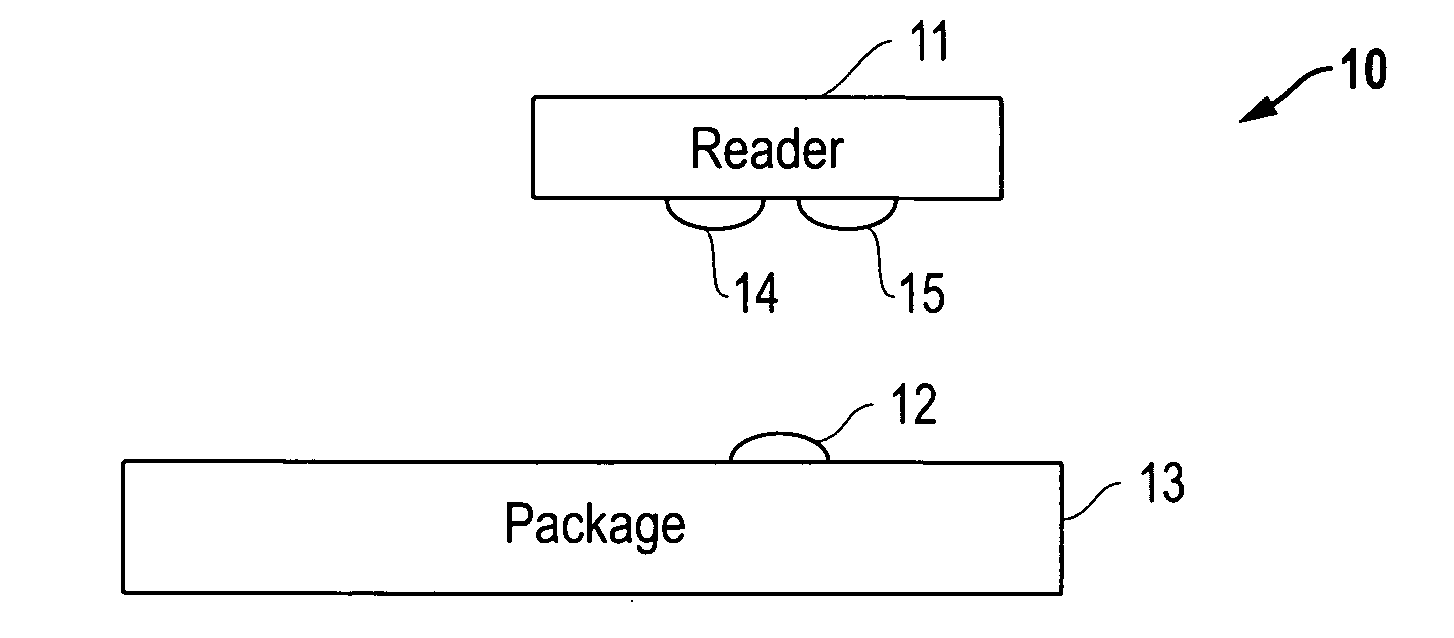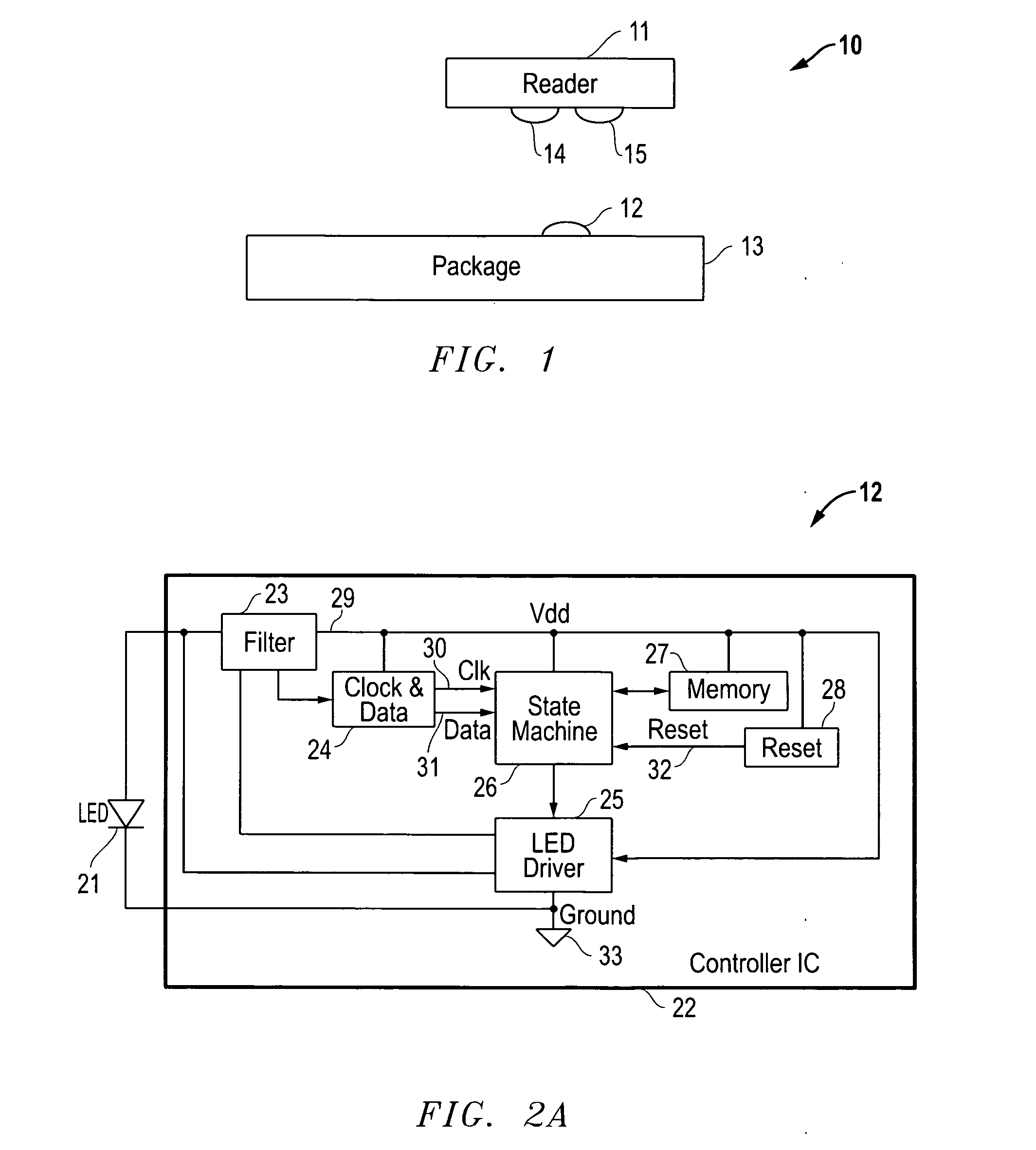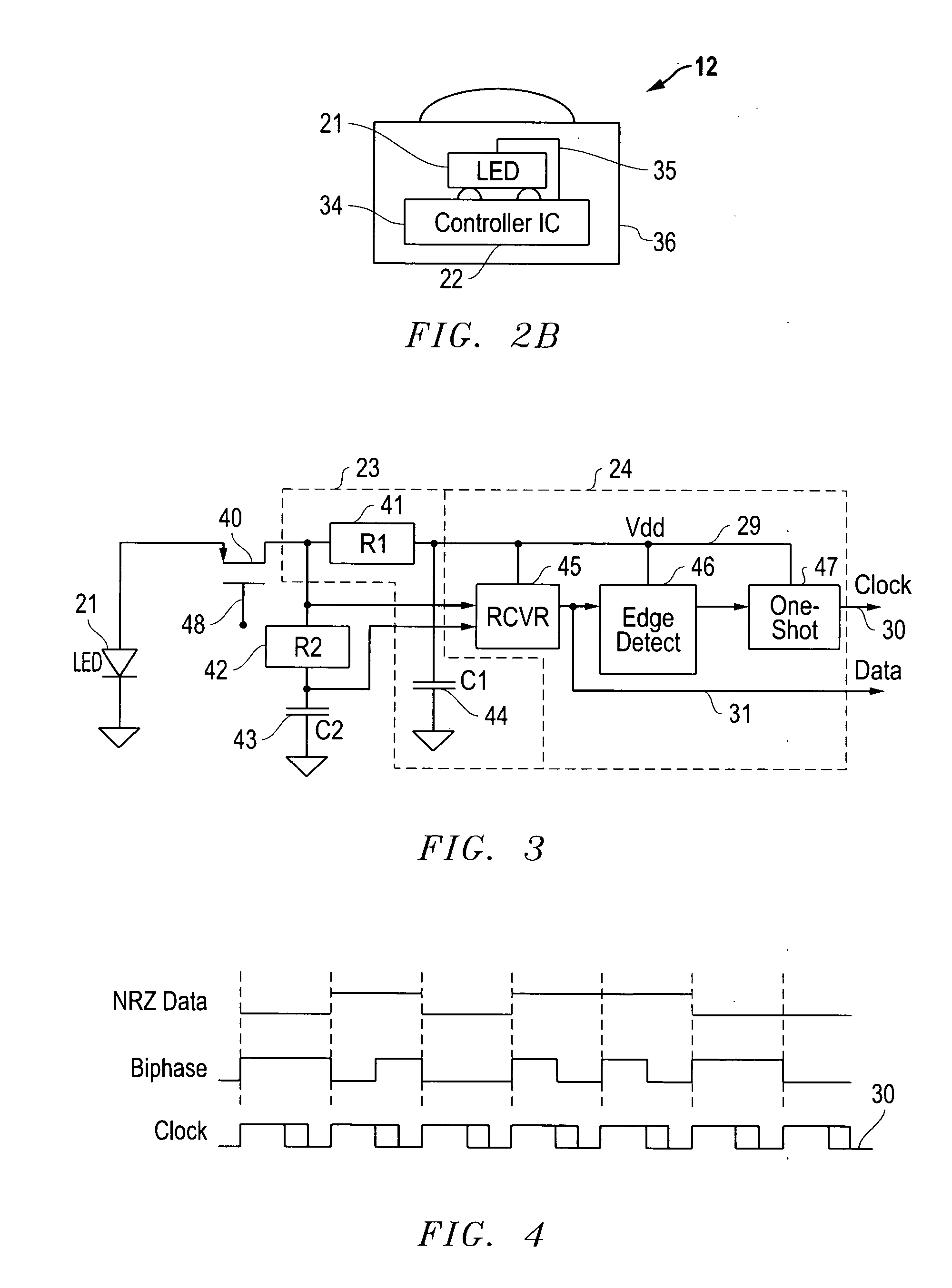Optical communication device, method and system
a communication device and optical communication technology, applied in the field of optical communication devices, can solve the problems of limited market penetration, large and expensive solar powered sensors, and limited application,
- Summary
- Abstract
- Description
- Claims
- Application Information
AI Technical Summary
Benefits of technology
Problems solved by technology
Method used
Image
Examples
Embodiment Construction
[0041]Optical communication devices, systems and methods are disclosed that utilize a single optical device to transmit and receive data. Further, this single optical device can also be used to power the device in addition to providing for communications to external devices.
[0042]Turning now to the drawings, FIG. 1 illustrates one example of an optical identification tag system 10, which includes a reader 11 and a tag 12 attached to a package 13. It is understood that system 10 can operate with any frequency light including and preferentially near infrared light (e.g., wavelengths of about 0.7 to 1.0 micrometers). The reader 11 includes an optical transmitter 14 and optical receiver 15 that provide power to and communicate with the tag 12. The reader 11 is powered by a battery or an electrical outlet and, if desired, can be optimized to produce a maximum amount of transmitted optical power to the tag 12 and can be optimized to receive a minimum amount of power. This enables the maxi...
PUM
 Login to View More
Login to View More Abstract
Description
Claims
Application Information
 Login to View More
Login to View More - R&D
- Intellectual Property
- Life Sciences
- Materials
- Tech Scout
- Unparalleled Data Quality
- Higher Quality Content
- 60% Fewer Hallucinations
Browse by: Latest US Patents, China's latest patents, Technical Efficacy Thesaurus, Application Domain, Technology Topic, Popular Technical Reports.
© 2025 PatSnap. All rights reserved.Legal|Privacy policy|Modern Slavery Act Transparency Statement|Sitemap|About US| Contact US: help@patsnap.com



